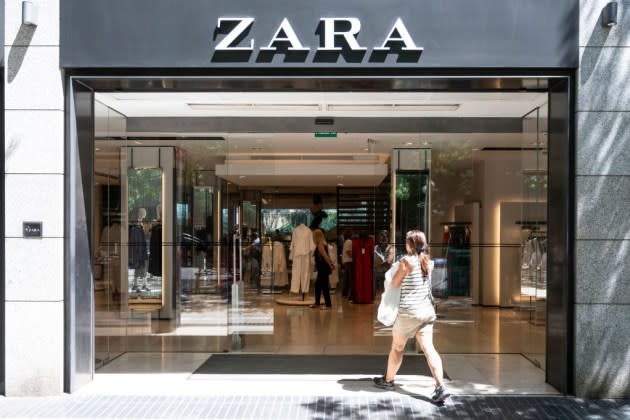Inditex and H&M Report Rebounding Sales

Although sales appear to be slowing at both Zara parent Inditex Group and H&M Group, one seems to retain the edge.
H&M Group’s third quarter net sales rose 6 percent to 60.897 million Swedish Krona ($5.46 billion), but net sales in local currencies were “flattish compared with last year.” Excluding Russia, Belarus and Ukraine, net sales were up 8 percent in Swedish Krona. Net sales in the year-ago quarter were 57.45 billion Swedish Krona ($5.14 billion).
More from Sourcing Journal
“The work towards the company’s goal of reaching a 10 percent operating margin in 2024 is going in the right direction. Profitability and inventory levels have been prioritised in the quarter,” the Swedish retailer said. It plans to provide more details in its nine-month report, slated for release on Sept. 27.
Inditex sales for the first few weeks of the third quarter from Aug. 1-Sept. 11 climbed 14 percent, a bit off from the 16.6 percent gain in the first half on a constant currency basis.
The Spanish company’s first half results that came in ahead of expectations, but its shares fell on perceived weakness in the start of third quarter sales.
First-half net income rose 40.1 percent to 2.5 billion euros ($2.7 billion), while net sales gained 13.5 percent to 16.85 billion euros ($17.97 billion) from 14.85 billion euros ($15.83 billion). The company’s core brand Zara posted a 13.1 percent sales increase to 12.36 billion euros ($13.18 billion).
Óscar Garcia Maceiras, Inditex CEO, said that first half results reflect the company’s “ongoing commitment to creativity, quality and customer experience, as well as the determined progress in sustainability, drives a strategy that is taking our business to the next level.”
He noted that sales for the first half were positive in all geographical areas. Gross margin for the period reached 58.2 percent, up 27 basis points from a year ago.
For the most part, Inditex has been beating expectations. Zara entered the resale market with a pre-owned service that began Nov. 3, 2022. H&M entered the pre-loved market this past March, in partnership with the ThredUp platform. And since Inditex works with many nearshore factories, it can move designs into stores faster than many of competitors. Working locally also helps it spend less on freight costs.
In addition to keeping close tabs on expenses, Zara also began raising prices in January 2022 in response to higher costs due to inflation, and continued throughout the year. That gave it some wiggle room and confidence to stay the course through the end of 2023. H&M also hiked prices last year, and the nine-month report could offer insight on future pricing plans.
The two companies are making similar sourcing moves. This summer, Inditex and H&M announced plans to quit Myanmar sourcing over evidence of labor abuse in supplier factories since the military ousted the civilian government in 2021.
Inditex operated 5,745 doors at the end of the first half, down from 6,370 a year ago. New stores and revamps feature its new design approach. Zara stores now feature new security hardware that eliminates hard tags.
By 2030, Inditex to use only raw materials that have a lower environmental impact. The company estimated that 25 percent of the textile fibers it will use will be from next generation materials “that do not yet exist at an industrial scale.” Forty percent of the textile fibers are expected to come from conventional recycling processes and 25 percent from crops grown using organic or regenerative farming practices. The rest will be from other low-impact fibers.
